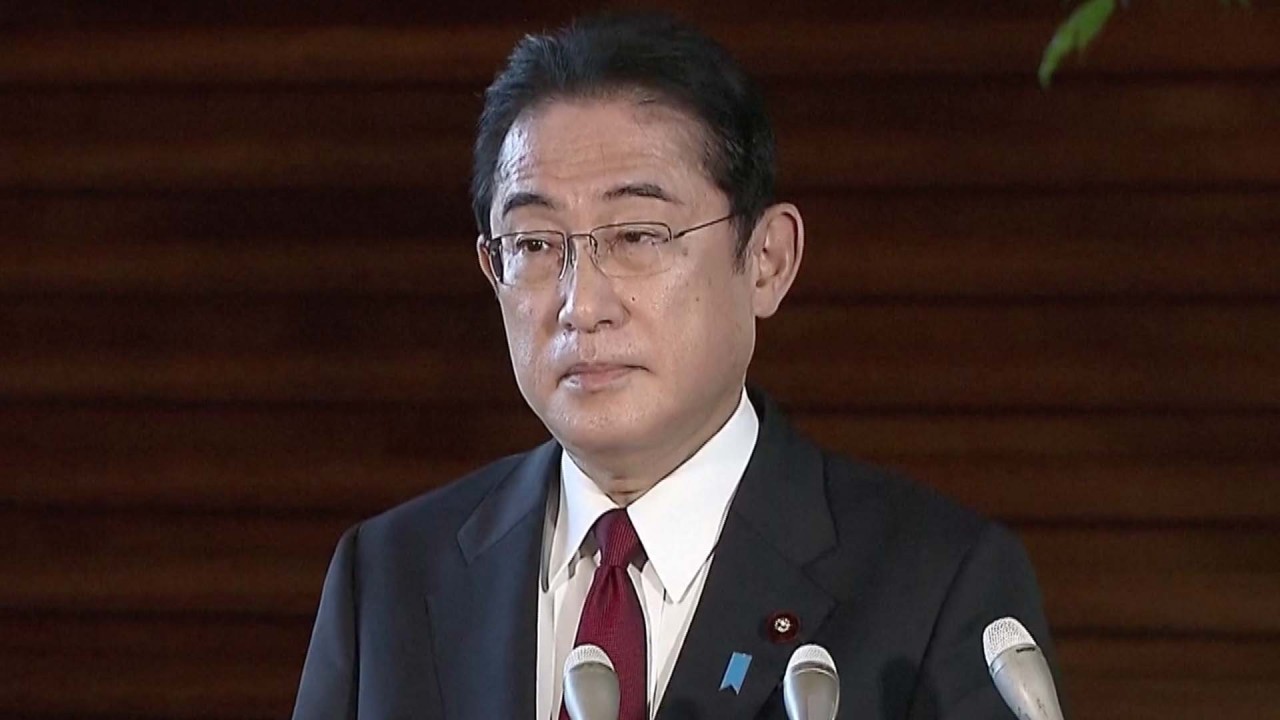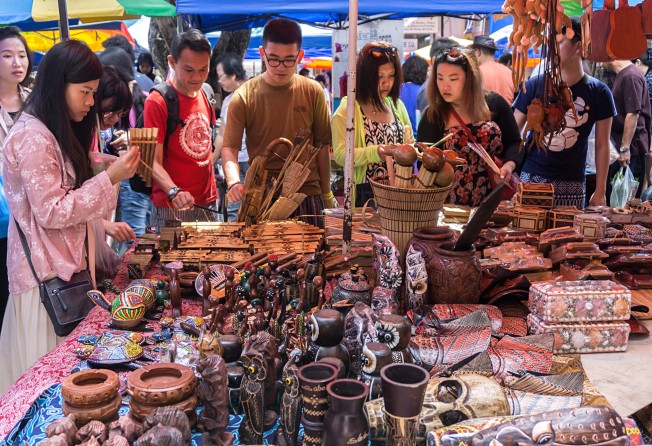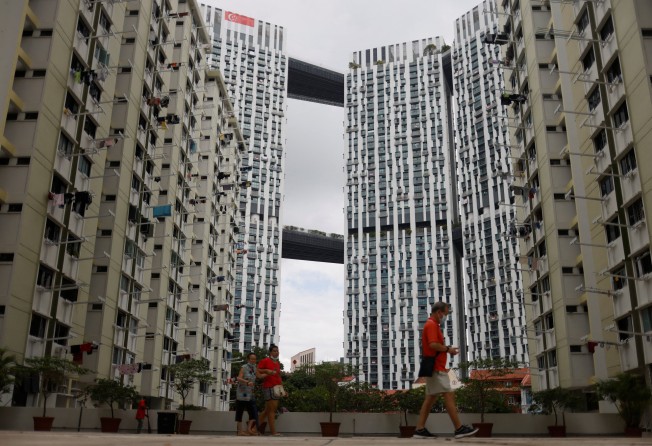
01:26
Japan mandates Covid-19 testing for visitors from mainland China amid Covid-19 surge

In Singapore the rush is on to hire tour guides, Thai property agents are prepping for a bonanza and Malaysian traders are swiftly swapping Christmas decorations for red lanterns – Asia is bracing for the return of Chinese tourists to the region after three years sequestered at home by the pandemic.
The travel plans of the world’s largest population are poised to stress-test the capacity of tourism in countries which are only just rebounding from the evisceration of the pandemic years, yet businesses are relishing the economic shot in the arm that is likely to be delivered over the coming days and weeks.
But as China’s beleaguered people rush to book flights – many for their first trips overseas in three years, others for their first ever holiday abroad – some nations are concerned about the risks of a revival of the pandemic just as they hope to have banished it.
India and Japan are introducing negative Covid-19 tests as a mandatory condition of entry from China. In the Philippines, Transport Secretary Jaime Bautista on Wednesday said he was in favour of imposing Covid measures including testing on inbound travellers from China.
Yet for most of a region which had to suddenly digest the absence of their No 1 visitors when China closed its doors in early 2020, their return, several months earlier than expected, is a cause for cheer.
China said it would drop inbound quarantine on January 8, sparking a scramble for outward flights to top destinations Japan, South Korea and Thailand.
For Suen Tat Yam, founder of Monster Day Tours in Singapore, his immediate challenge is to hire and train enough Mandarin-speaking tour guides before the masses arrive.
“Everyone that is in the tourist sector has been anticipating this move [relaxation of Chinese borders] and all of them will be aggressively hiring, not just us,” he said.
Before the Covid-19 pandemic, Chinese tourists made up the bulk of international arrivals to the city state, at 3.6 million in 2019.
That number plunged to a mere 17,000 in the first half of the year as China stuck to its zero-Covid strategy and kept its borders mostly shut.

Demand for group tours to food streets and Singapore’s start-up hubs, to private itineraries for large, multi-generational families, are all likely to surge in coming days.
“We believe that they will come back fast and furious,” said Stanley Foo, founder of tour operator Oriental Travel and Tours.
“They’ll come back, automatically, without any promotion. I think they are just dying to come.”
In neighbouring Malaysia, a country where over a fifth of the population are ethnic Chinese, Santa and his reindeer are fast vanishing from malls and shopping streets – to be replaced by the red lanterns, lions and dragons synonymous with the Lunar New Year which starts on January 22.

“It’s been quiet without tourists from China,” said Mary Chen who runs a clothing business in Kuala Lumpur. “Western tourists come here to sightsee … Chinese tourists come to shop.”
In Kota Kinabalu, a tourist haunt in Sabah state punished by the gruelling years of border closures wrought by the pandemic, businesses are firmly in catching position for the returning visitors.
“Suria Sabah mixed their Christmas and Lunar New Year decorations with many more for Lunar New Year,” said Beatrice Luma of the resort’s main shopping centre.
But the glee and excitement of the economic boom to come are tempered by fears over a rebound of virus cases, pressure on health services and the potential for new variants to emerge from the largest population on earth which is yet to achieve herd immunity.
Equally, the return of mass Chinese tourism may bring old problems of visitors circulating inside a closed-loop economy run by outside Chinese companies.
“Chinese tourists contributed a lot to [Indonesian tourism], although they were not quality tourists since their tour was handled by [Chinese travel agencies] here,” said Budijanto Ardiansjah of Indonesian Tour and Travel Agency Association.
“However we are still seeing [enough potential] from the Chinese market, since their number is huge.”

A tour guide in Thailand, where pre-pandemic 10 million Chinese tourists drove record numbers of visitors, echoed those fears, saying the majority of the money goes to a small number of well-placed businesses – with connections to China.
“I’m not so thrilled,” said one veteran guide in Pattaya, a resort town east of Bangkok.
“It’s never going to benefit us. The second the Chinese tourists are back they’ll go straight back to the ‘zero-dollar’ model, where money stays in the pockets of a few Chinese.”
Thai authorities have said they expect to pull 5 million Chinese visitors in 2023.
In Japan, the government has reacted with extreme caution as a country of 1.4 billion suddenly exits zero-Covid, allowing the virus to rip through its population.
Japanese Prime Minister Fumio Kishida said there were “great discrepancies” in information coming out of the country, fuelling fears of new variants which could pose a danger to countries tentatively resetting from the virus.
Japan will ask all arrivals from China to provide a negative Covid-19 test, with a week-long quarantine for those who test positive. It is also limiting the access to four main airports to control the inbound volume of travellers. India has introduced PCR testing on arrival for Chinese passengers.
Meanwhile, tourism to the mainland may have to wait several more weeks before Brand China recovers from the gruelling years of zero-Covid restrictions, tour operators say.
Mode Tour, second-largest travel agency in South Korea, said “it is not the right time to resume the tourist programmes yet”, adding it could take three more months to assess the pandemic situation inside China.
“Currently, there are no demands for travelling to China among South Korean tourists. We need to see how this would recover after the Covid situation in China settles down.”

Yet those jitters are not reflected in the property market, where agents are salivating at the prospect of their biggest pre-pandemic customers returning to revenge-spend on condos, retirement homes and safe investment properties.
“They will come in quite a big wave,” said David Chandran, managing director of property firm Cosmopolitan Real Estate.
His firm saw close to a 50 per cent dip in Chinese demand during the pandemic and Chandran expected it to rise steadily.
Already, he has a “network of clients” hailing from the mainland who were eyeing massive bungalows on the outlying Sentosa Island and luxurious condominiums in Singapore’s central regions. One of his Chinese clients has a budget of S$70 million.
According to Chandran, these potential buyers have been wanting to view the properties since the start of the pandemic and China’s loosening of curbs would provide an opportunity.
“For real estate, they’d want to walk into the house and experience it before they put a cheque,” he said.
The Lunar New Year is typically a time Chinese buyers dive into Singapore’s red hot market, said Clarence Foo, senior associate division director at property agent Propnex Realty.
“What the opening has done was to help bring forward a lot of their relocation plans,” he said. “I think we will see a fairly good recovery.”
Reporting by Dewey Sim, Kimberly Lim, Resty Woro Yuniar, Hadi Azmi, Biman Mukherji, Seong Hyeon Choi, Bloomberg